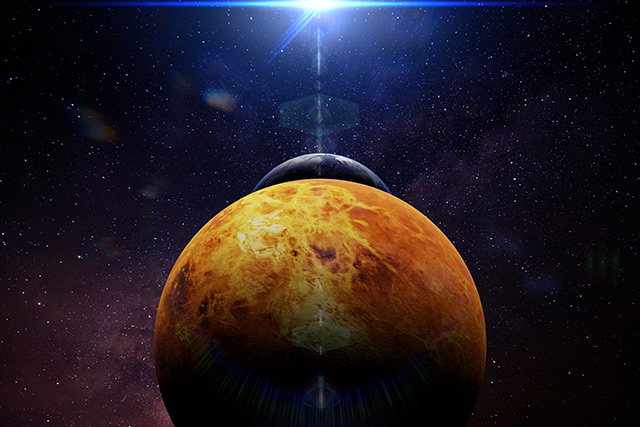Solar “superflare” could hit Earth within the next 100 years, researchers suggest
04/04/2021 / By Virgilio Marin

A study published in the Astrophysical Journal suggests that the sun can unleash a massive burst of energy called a “superflare” within this century. Such an event can knock down the power grid and satellites, pushing society to the brink of collapse.
“Our study shows that superflares are rare events,” said Yuta Notsu, an astronomer currently performing research at the University of Colorado Boulder (CU) and the lead researcher of the study. “But there is some possibility that we could experience such an event in the next 100 years or so.”
The sun is not as tranquil as previously thought
Superflares are high-powered versions of solar flares, which are sudden bursts of solar energy that cause stars to appear brighter than usual. They can be seen from hundreds of light-years away and are thought to occur mostly on young and highly active stars.
The first evidence of superflares came from the National Aeronautics and Space Administration‘s Kepler Space Telescope, which was launched in 2009 to search for planets several light-years away. Data from Kepler showed that the light from distant stars seemed to get suddenly and momentarily brighter. This suggested the existence of solar flares that are hundreds to thousands more powerful than the brightest ones ever recorded using modern instruments on Earth.
Before the CU study, scientists were unsure whether the sun could produce superflares, though some were convinced that the sun is too old to be able to pump out that much energy.
“When our sun was young, it was very active because it rotated very fast and probably generated more powerful flares,” Notsu said. “But we didn’t know if such large flares occur on the modern sun with very low frequency.”
To that end, Notsu and his colleagues searched for superflares generated by sun-like stars using data from the European Space Agency‘s Gaia spacecraft and the Apache Point Observatory in New Mexico. After analyzing those events, the researchers confirmed that younger stars tend to produce the most superflares, discharging enormous whips of energy once every week or so.
But older stars like the sun, which is currently aged around 4.6 billion years, can also generate superflares once every 1,000 years on average. (Related: Scientists warn of MASSIVE solar storms: “We need to be better prepared”.)
Earth’s magnetic field can blunt the effects of solar flares, but high-powered versions can be disastrous since coronal mass ejections – fast-moving streams of charged particles that typically accompany solar flares – can barrel toward Earth and knockout satellites, power grids and other electronics.
“If a superflare occurred 1,000 years ago, it was probably no big problem. People may have seen a large aurora,” Notsu said. “Now, it’s a much bigger problem because of our electronics.”
Past solar storms caused widespread auroras, downed communication lines
Powerful solar storms hit Earth multiple times before, bringing down communication lines and causing widespread auroras – the polar lights – that reach near the equator. A recent study in the preprint server arXiv shows that an intense solar storm in 1582 illuminated the skies over Portugal for three consecutive nights.
Researchers compiled old eyewitness accounts by observers in Lisbon. According to one of the texts, the night sky looked like it was burning in flames, which no one in the area had ever seen before. The text’s author had the same observation at the same time the next day, though it was less intense.
Sightings of auroras were not unheard of at the time because the polar lights commonly occur at the planet’s northernmost and southernmost latitudes. But witnessing auroras in near-equatorial regions such as Portugal was extremely rare.
In 1859, the worst known solar storm to hit Earth caused auroras that were seen as far as Hawaii and Cuba. Known as the “Carrington Event,” this solar storm also knocked down telegraph wires in the U.S. and Europe, triggering widespread fires. Reports showed that if a solar storm this severe occurred today, it could cause up to $2 trillion in initial damages by crippling communications and fueling chaos – a scenario that would take society up to 10 years to recover.
Learn more about the impact of a powerful solar storm at Disaster.news.
Sources include:
Tagged Under: auroras, Carrington event, chaos, Collapse, coronal mass ejections, electronics, EMP, grid down, grid failure, natural disasters, power grid, preparedness, research, satellites, solar flare, solar flares, solar storms, space weather, superflares, survival
RECENT NEWS & ARTICLES
COPYRIGHT © 2017 SPACE.COM
All content posted on this site is protected under Free Speech. Space.com is not responsible for content written by contributing authors. The information on this site is provided for educational and entertainment purposes only. It is not intended as a substitute for professional advice of any kind. Space.com assumes no responsibility for the use or misuse of this material. All trademarks, registered trademarks and service marks mentioned on this site are the property of their respective owners.





















